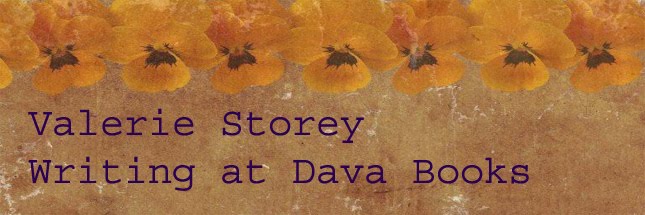Apples and Pears;
Derwent Inktense Pencils on
Acrylic Gel Print Background
When I was in elementary school we used to play a "fortune telling" game that I can only describe as a piece of multi-folded paper that fit over our fingers, had various numbers, colors, and "fortunes" written on each of the folded sides, and was opened and shut like a greedy baby bird mouth, or a type of hand puppet. Anybody know what I'm talking about?
I used to love making--and using--those things. All through math lessons, recess, even story time, I was busy folding my notebook paper and thinking up outrageous fortunes for anyone willing to play along. To get to the fortune, the person playing the game had to first choose a number (written on the outside of the first set of folds), and then a color (revealed when the paper was opened and closed as many times as the number chosen). Over and over: pick a number, pick a color . . . Once the color had been chosen, you opened a flap to reveal the surprise: Oh, you will win a million dollars! Or: You will get straight A's!
I've been thinking about that game these last few weeks, especially as my life seems a lot like "pick a number, pick a color" as we choose the decor for our new house, from wall paint to carpet, curtains, and breakfast nook lighting. So far the master bedroom and my office/art room have both been repainted twice thanks to some wild and wrong decisions (e.g., salmon and apricot thankfully changed to neutrals with names like "Twilight" and "Taupe Mist") and I still can't decide what on earth I want for the laundry room flooring.
Which is why I think I'm more inclined to want to draw than write right now. There's something I need to express in color at the moment, and the color that is calling to me the loudest is yellow. This spring I've seen it everywhere in Albuquerque: the magnificent blooming Spanish Broom growing in my neighbor's front yard; rogue daisies sprouting in cracked cement in an industrial park; the apples I bring to work for my afternoon snack. Yellow is such an optimistic and comforting color--maybe too strong for my walls, but definitely a much-needed accent for all those neutrals.
Seeking out and concentrating on a single color as a creative exercise can be a great art journal or writing prompt. I don't know how long my "yellow phase" will last, but for now I'm turning my search for it into a daily habit, taking note of my feelings and memories associated with the color's many hues and shades. Although I'm currently using yellow as the focus of my artwork, I'm certain I'll be using my notes later on for some poetry, or as the basis for a descriptive passage in my WIP.
So how about you? What's your favorite color--or most detested? Sometimes it can be interesting to explore our reactions to colors we dislike as much as those we love. In the meantime, I've got to start finding some ideas for that laundry room . . . Catch you later.
Tip of the Day: The next time you're in search of some creative inspiration, go for a "color hunt" through your house, workspace, favorite store, or nature walk. Pick a single color and note how many times it appears and in what form. Paint or write your results, and who knows? You may experience an entire change of fortune as an added bonus!




